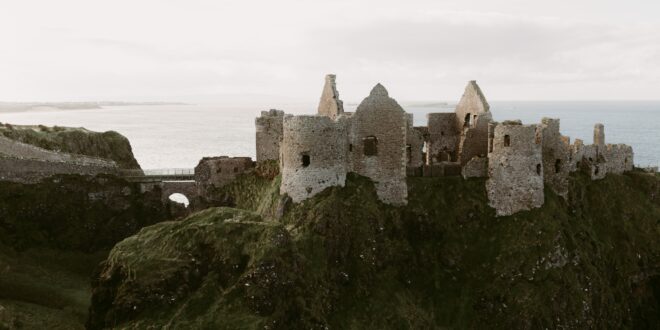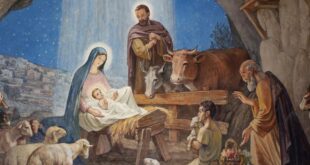Here are some interesting facts about St. Patrick – The Patron Saint of Ireland
WHO WAS ST. PATRICK?
St. Patrick was a Christian missionary credited with the conversion of Ireland from paganism. He lived from the late 4th century A.D. to the mid 5th century A.D., so long ago that it’s difficult to separate fact from legend.
St. Patrick was born in either Scotland or Wales, the son of Roman parents living in Britain. When he was about fifteen or sixteen, he was captured and enslaved by an Irish chieftain during a raiding party across the sea. He spent several years enslaved in Ireland, herding and tending sheep and swine. It was during his captivity that St. Patrick dedicated his life to God. Legend has it that St. Patrick escaped captivity and Ireland after a dream in which God instructed him to journey to the Irish coast where he found a ship that returned him to his family.
After years of religious study, he became a priest. In a document attributed to him known as “The Confession”, St. Patrick heard the voice of the Irish in his dreams, “crying to thee, come hither and walk with us once more.” Eventually, Pope Clemens commissioned St. Patrick as bishop to preach the gospel to the Celtic people. Arriving back in Ireland, he commenced an incredible mission, travelling across the country, preaching and baptizing, ordaining priests and bishops, erecting churches and establishing places of learning and worship, despite constant threats to his life. It has been said that he and his disciples were responsible for converting almost all the population of Ireland to Christianity.
LEGEND OF THE SERPENTS
The most famous legend about St. Patrick is that he miraculously drove snakes and all venomous beasts from Ireland by banging a drum. Even to touch Irish soil was purported to be instant death for any such creature. However, this legend is probably a metaphor for his driving the pagans from Ireland, as snakes were often associated with pagan worship.
WHY THE SHAMROCK?
Finding that the pagan Irish had great difficulty comprehending the doctrine of the Trinity, St. Patrick held up a shamrock (similar to a three-leaf clover) to show how the three leaves combined to make a single plant, just as the Father, Son, and Holy Ghost combined to make the holy Trinity. The Irish understood at once, and from that time the shamrock has been the symbol of the land. Irishmen wear it in their hats on the saint’s day.
WHY MARCH 17th?
It is the death of Saint Patrick, and his recognition as the patron saint of Ireland, that led to the celebration of March 17th as Saint Patrick’s Day. In Ireland, St. Patrick’s Day is a holy, religious time with praying, singing and dance. Outside Ireland, St. Patrick’s Day is primarily a secular celebration of all things Irish.
There are conflicting versions of the first North American celebration. One source says it was held in Boston in 1737 by the Irish Charitable Society, and later in Philadelphia and New York by the Friendly Sons of St. Patrick and the Ancient Order of Hibernians. Another source states that on March 17, 1762, a group of Irish-born soldiers, en route to the local tavern of renown to honor their patron saint, staged the first parade in colonial New York, complete with marching bands and colorful banners. Bystanders and passerby’s joined the promenade, singing Irish ballads and dancing down the cobblestones. The event was so popular it has been repeated annually since then.
WHAT ABOUT WEARING GREEN?
Ireland’s nickname is “The Emerald Isle” because the grass on the hills is so green. Everyone wears the color green on St. Patrick’s Day to honor The Emerald Isle. If someone forgets to wear green on St. Patrick’s Day, those who are wearing green are allowed to give the offender a pinch as a reminder. However, if you pinch someone who is wearing green, that person gets to pinch you back ten times! Some of the biggest St. Patrick’s Day parades are in Chicago, Illinois, New York City, and Savannah, Georgia. The city of Chicago goes so far to celebrate that they dye their river green!
For more Great St. Patrick’s Day fun, facts and links visit www.blackdog.net/holiday/pat/
——-
St. Patrick’s Breastplate
… also known as the “Lorica of St. Patrick” and sometimes “The Deer Cry.” It is attributed to St. Patrick and lore has it that reciting this prayer protected him when he ventured to visit the Pagan King of Ireland. Assassins were ready for an ambush, but as Patrick said the prayer it seemed to the enemies that a herd of deer were going by.
Recite this prayer in the morning and you are ready to face the world.
I arise today through the
power of God:
God’s might to comfort me,
God’s wisdom to guide me,
God’s eye to look before me,
God’s ear to hear me,
God’s word to speak for me,
God’s hand to lead me,
God’s way to lie before me,
God’s shield to protect me,
God’s Heavenly Host to save me
from the snares of the devil,
from temptations to sin,
from all who wish me ill,
from near and afar,
alone and with others.
May Christ shield me today
against poison and fire,
against drowning and wounding,
so that I may fulfill my mission
and bear fruit in abundance.
Christ behind and before me,
Christ behind and above me,
Christ with me and in me,
Christ around and about me,
Christ on my right and on my left,
Christ when I lie down at night,
Christ when I rise in the morning,
Christ in the heart of every man who thinks of me,
Christ in the mouth of everyone that speaks of me,
Christ in every eye that sees me,
Christ in every ear that hears me.




